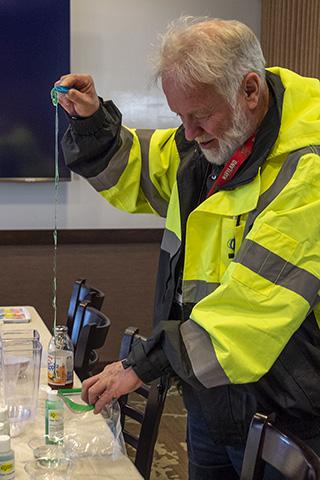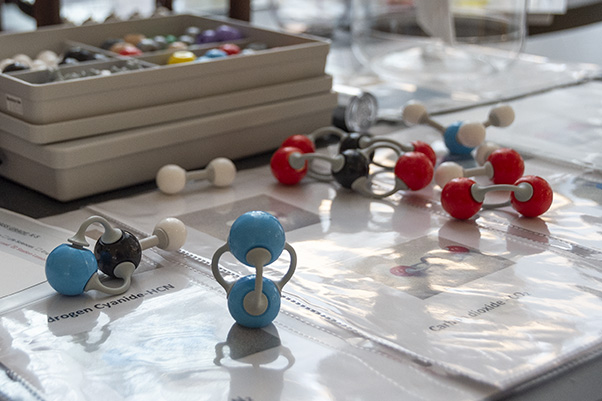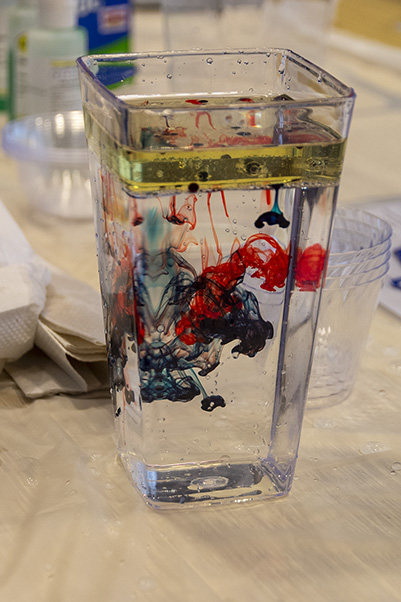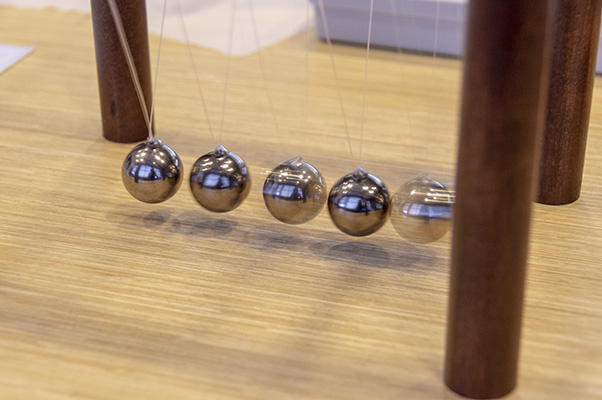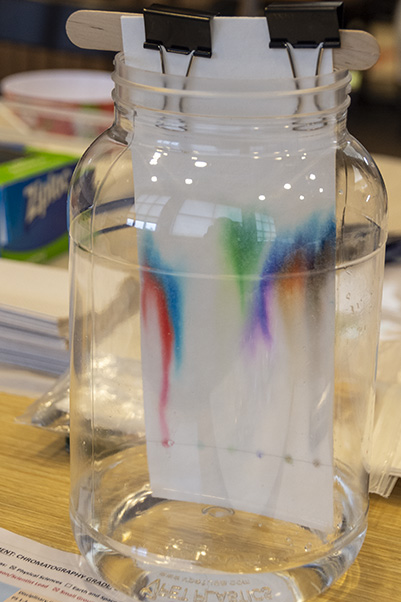Editor’s note: To read about and see more photos from the first open house, check out Marie White’s December 14 article.
There’s an opportunity to inspire local children’s interest in science, enrich their education, and make them smile. It’s a chance to step outside of your lab or office and—maybe—your comfort zone to make a difference in a student’s life. It’s the Education Outreach Program (EOP), and there is room for you to volunteer.
That was Cathy Cullen’s message during two recent open houses that gave NCI at Frederick staff a glimpse into the EOP, a program in which employee volunteers visit local elementary schools, middle schools, and community events to teach hands-on lessons and educate children about science.
Cullen, the EOP coordinator and an education outreach specialist with the Office of Scientific Operations, also aimed to show that the program is fun for both students and volunteers. Both events featured examples of the hands-on activities, and nearby whiteboards invited passersby to “come play.”
One visitor chose to make a polymer goo worm by squirting sodium alginate into a bowl of water. Another watched as Cullen made “fireworks” in a jar of water using cooking oil and food coloring. Both individuals expressed interest in the EOP.
Cullen explained that most activities can be taught to a range of students, with the lesson’s depth tailored to their grade level. Some activities have been added to the roster or recast to better align with local schools’ science education standards, while others allow volunteers to take a multidisciplinary approach. One example is the popular “hand boilers” activity, which can include a math activity to calculate air displacement and a short history unit about the scientists who discovered lighter-than-air gasses.
No matter the activity, students are almost always eager to participate. Cullen says that some younger students have enthusiastically asked whether the volunteers can visit every day. Many teachers also appreciate the program, as evidenced by the testimonials and brochures near the activities.
“Thank you so much for taking your time to come to Brunswick Elementary School. The kids really enjoyed the lessons and learned so much,” one local teacher wrote.
All government and contractor employees at NCI at Frederick are welcome to become volunteers. The Office of Scientific Operations provides all necessary materials and instructions for each lesson, so volunteers don’t need to be scientists to teach. The minimum time commitment is also very small—just a few hours per year—and, with supervisor approval, time spent volunteering can be counted as part of a normal work day.
To sign up, contact Cullen at cathleen.cullen@nih.gov.
“I am so excited to get things rolling with [the program],” Cullen said.


